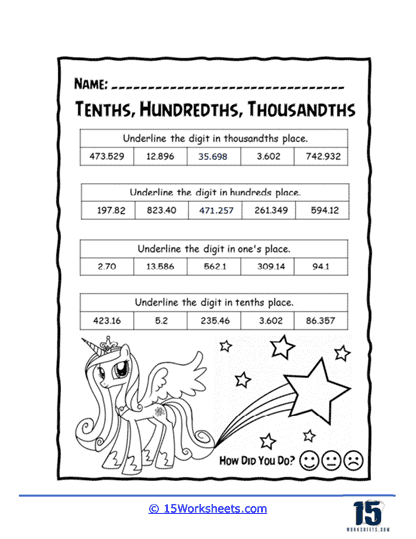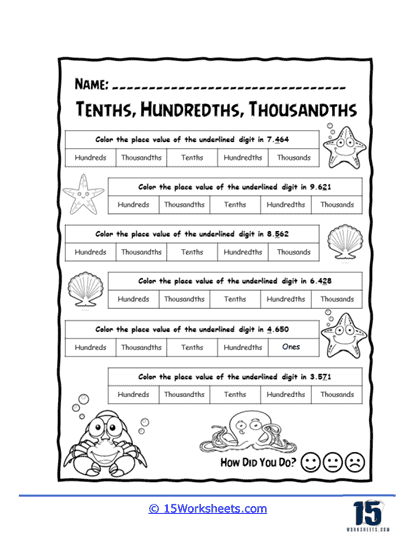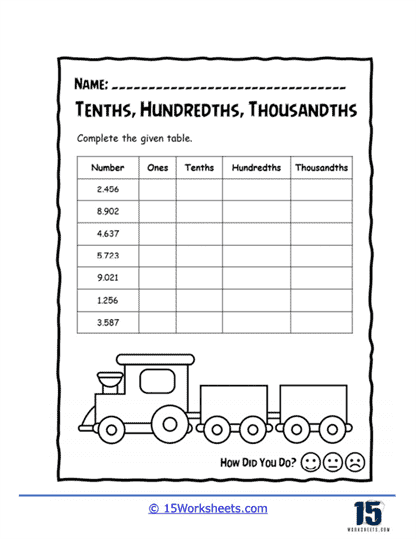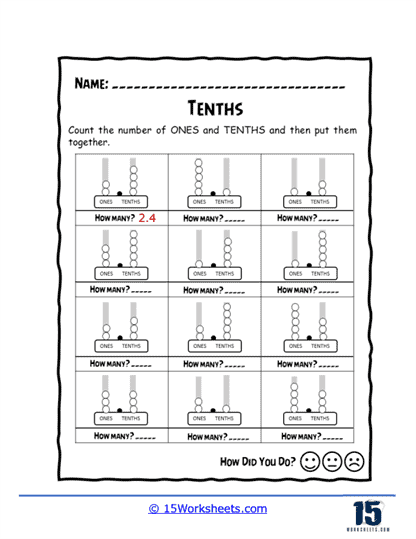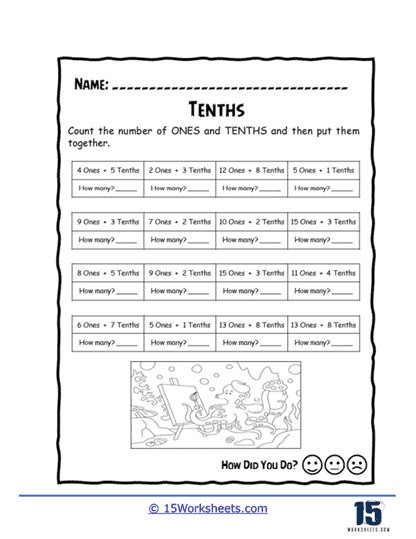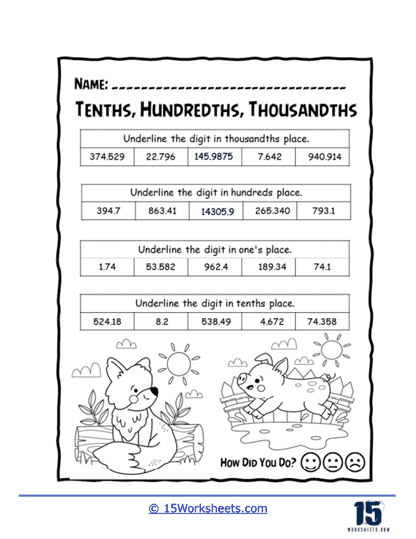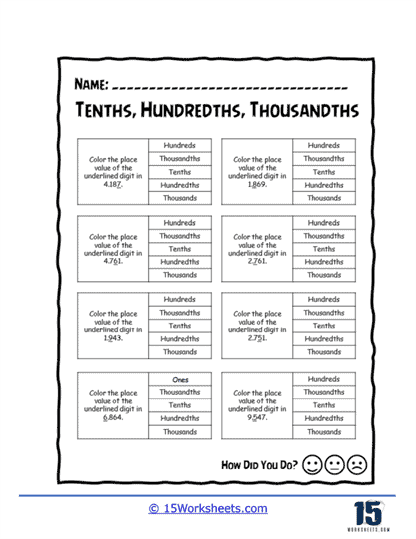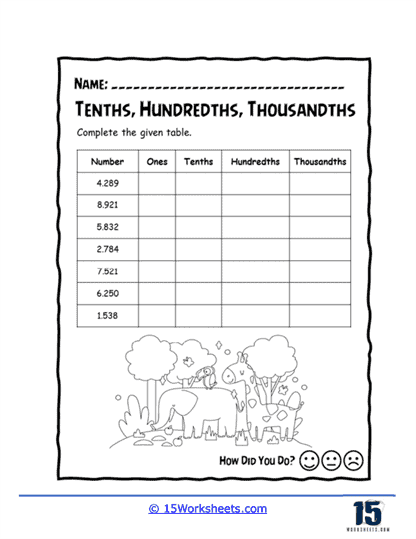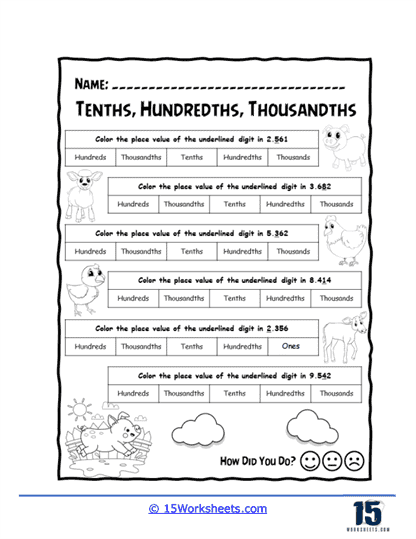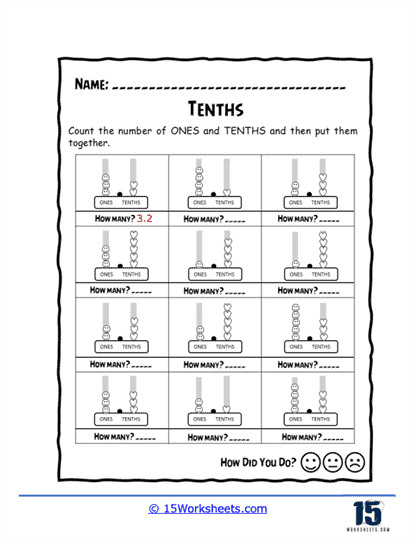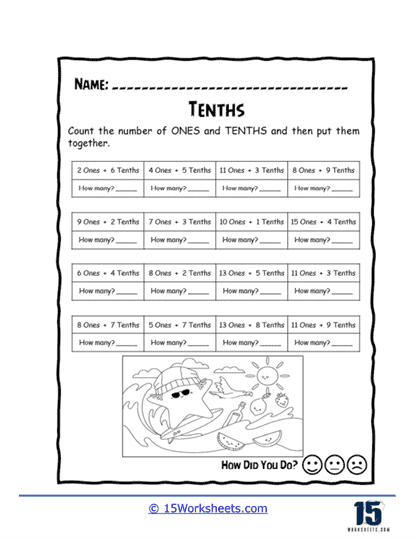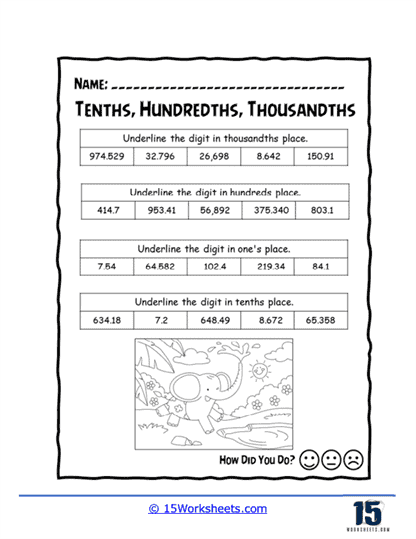Tenth, Hundredths, Thousandths Worksheets
About These 15 Worksheets
Imagine you’re standing in line at an ice cream shop, and you see a sign that says, “Ice cream scoop – $1.25.” The number “$1.25” tells you exactly how much money you need to buy a scoop. But have you ever wondered what each number or digit in “$1.25” means? To understand the value of each digit, we have to dive into the world of place values!
Place values help us understand the value of each digit in a number, especially when we’re dealing with decimals. Tenth, Hundredths, Thousandths place value worksheets are special worksheets that help you practice and understand how to read, write, and work with numbers that have digits after the decimal point.
Tenths – This is the first place after the decimal point. If you have the number 0.3, the digit 3 is in the tenth place. It represents three-tenths or 3/10.
Hundredths– Move one place to the right, and you’re in the hundredths place! For example, in the number 0.25, the digit 5 is in the hundredths place. This means five-hundredths or 5/100.
Thousandths – One more step to the right, and we’re at the thousandths place. If you see a number like 0.007, the digit 7 is in the thousandths place, which stands for seven-thousandths or 7/1000.
Types of Problems on These Worksheets
Identification Problems – These are the most basic type. Here, you’ll be given a number, and you’ll be asked to identify the digit in a specific place. For example – “What digit is in the hundredths place in the number 2.638?” (Answer – 3)
Rounding Problems – Rounding is when you simplify a number to make it easier to work with. For example, if you have the number 5.278 and you round it to the nearest tenth, it becomes 5.3. Rounding helps improve estimation skills, making you quicker in solving real-life problems.
Adding and Subtracting Decimal Numbers – These problems will have you add or subtract numbers with decimals. For instance – “Add 4.56 and 2.3.” This helps improve your precision in math.
Comparison Problems – Here, you’ll be asked to compare two decimal numbers to determine which is larger or smaller. For example – “Which is bigger – 0.65 or 0.7?” (Answer – 0.7)
How Does This Improve Math Skills?
Accuracy – Working with decimals teaches you to be precise. A small error in the decimal place can lead to a big mistake in an answer.
Number Sense – It helps you get a better feel for numbers, how they work, and their value.
Problem-Solving – Word problems challenge you to think critically, improve your comprehension skills, and apply your knowledge in practical situations.
Real World Applications
Whenever you deal with money, measurements, or percentages, you use decimals. So, understanding them prepares you for many real-world situations.
Shopping – When you’re buying items or comparing prices, you’re often dealing with numbers that have cents, which are decimals. For example, figuring out how much three items that each cost $2.49 will total up to requires adding decimals.
Cooking – Recipes often call for specific measurements, like 0.75 cups of sugar or 1.25 teaspoons of vanilla. Understanding decimals ensures your dish turns out perfect!
Sports – Think of the times in sports when we use decimals, like when someone runs a 100-meter race in 10.32 seconds.
Banking – When you save or earn interest on your money, those amounts are often in decimals. For instance, if you earned $10.75 in interest, understanding decimals lets you know you earned ten dollars and seventy-five cents.
Weather – Temperature readings, especially when precise, use decimals, like when it’s 72.5 degrees outside.



